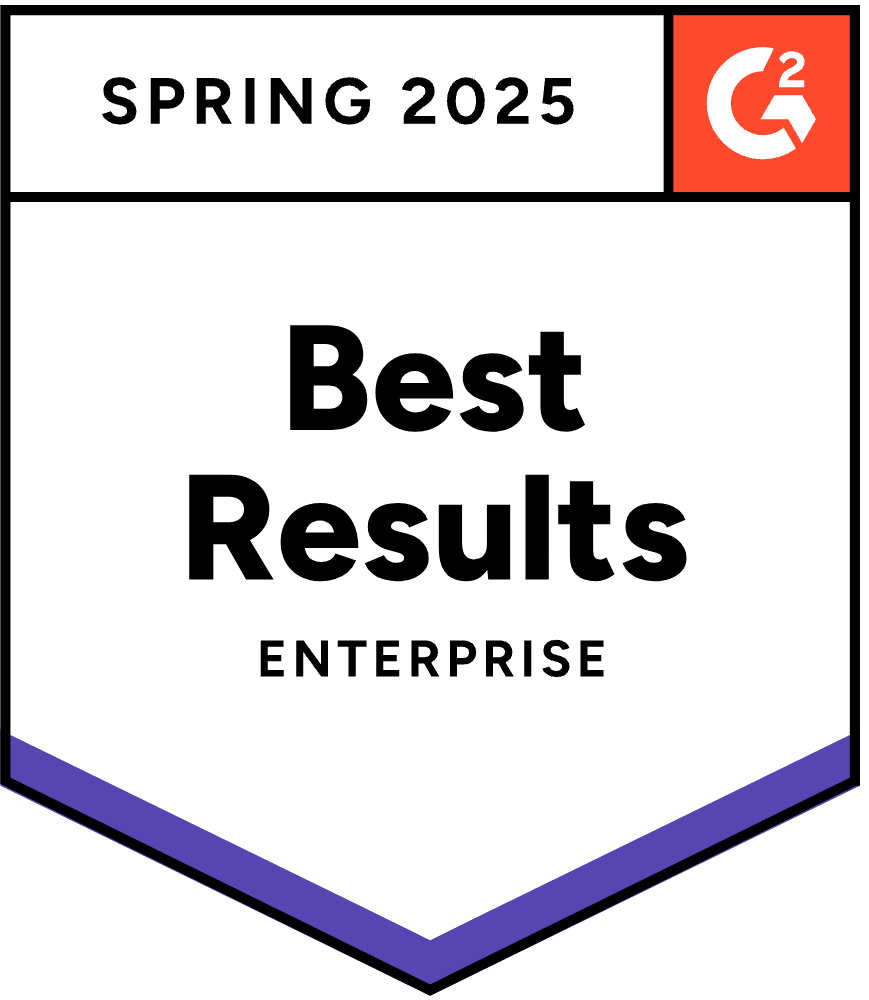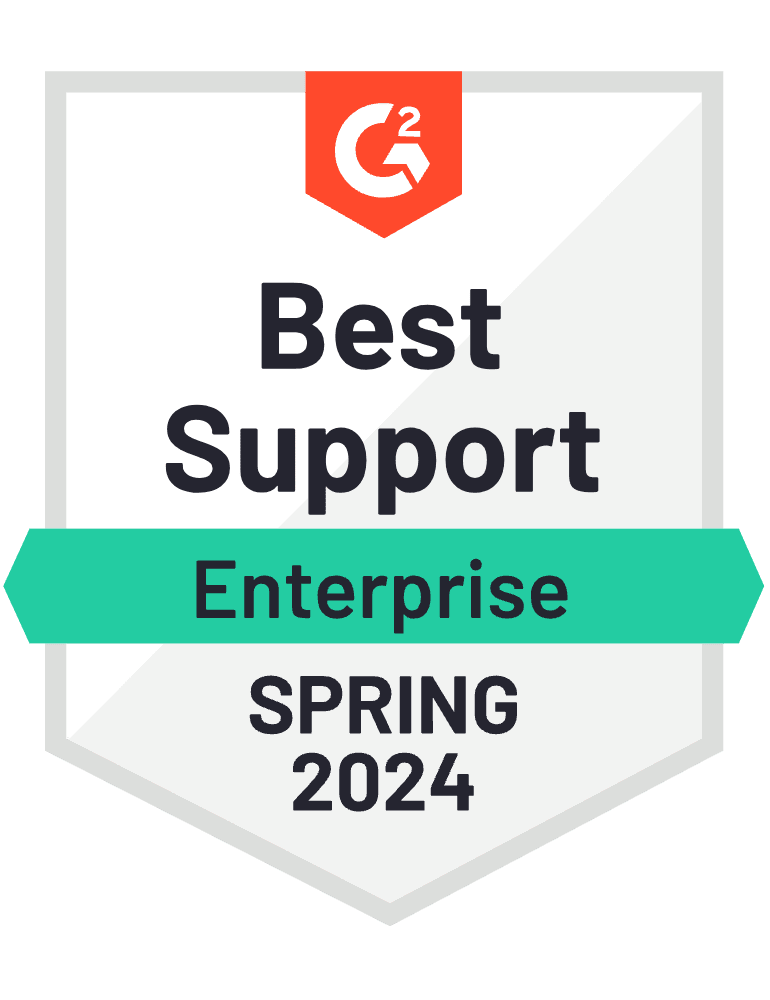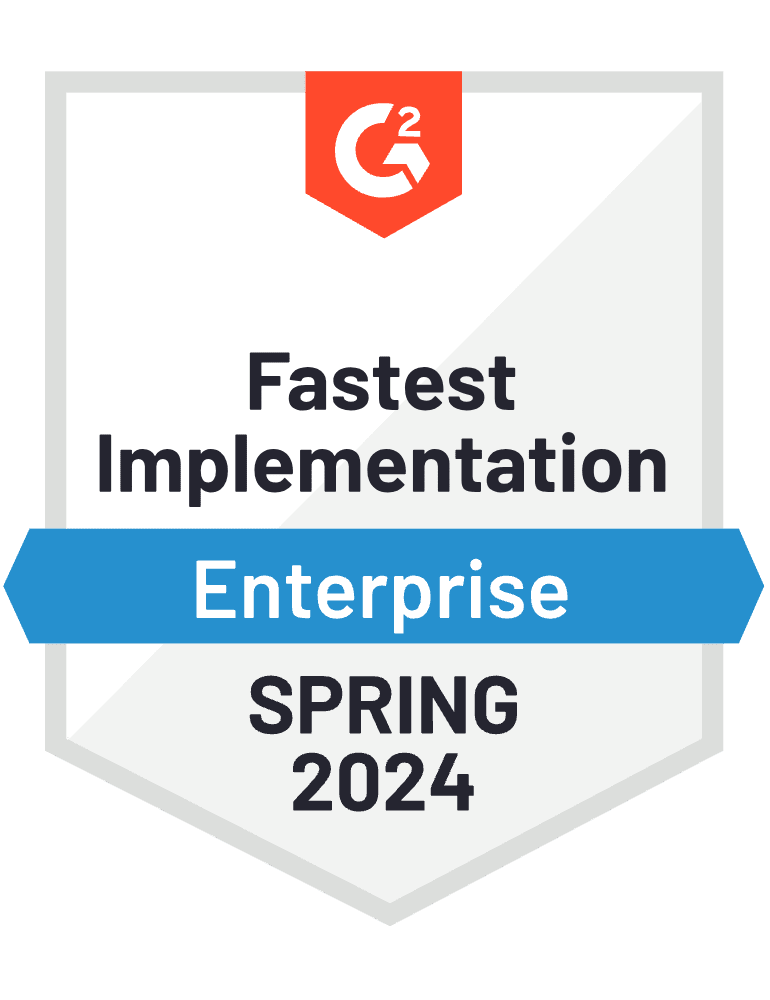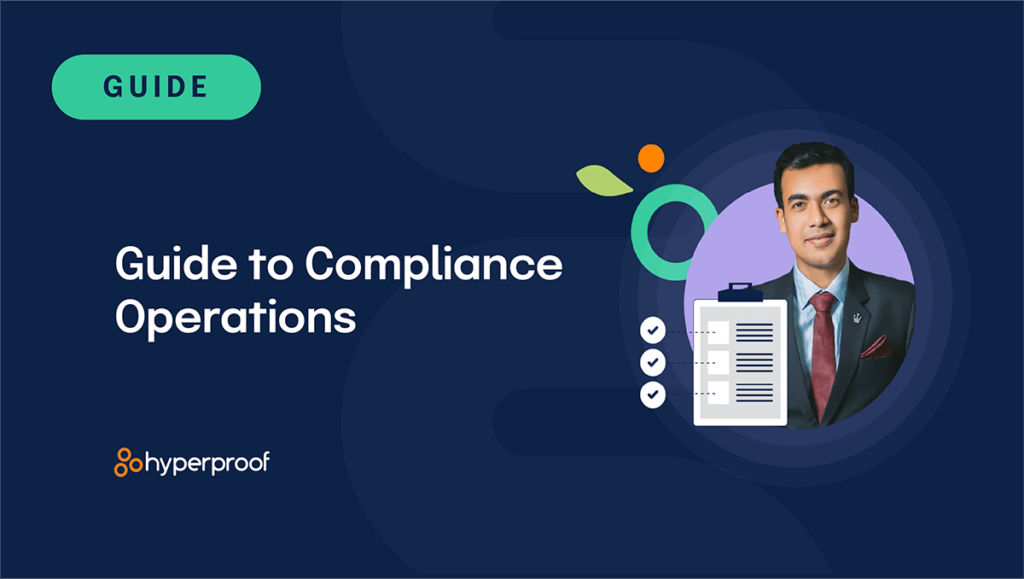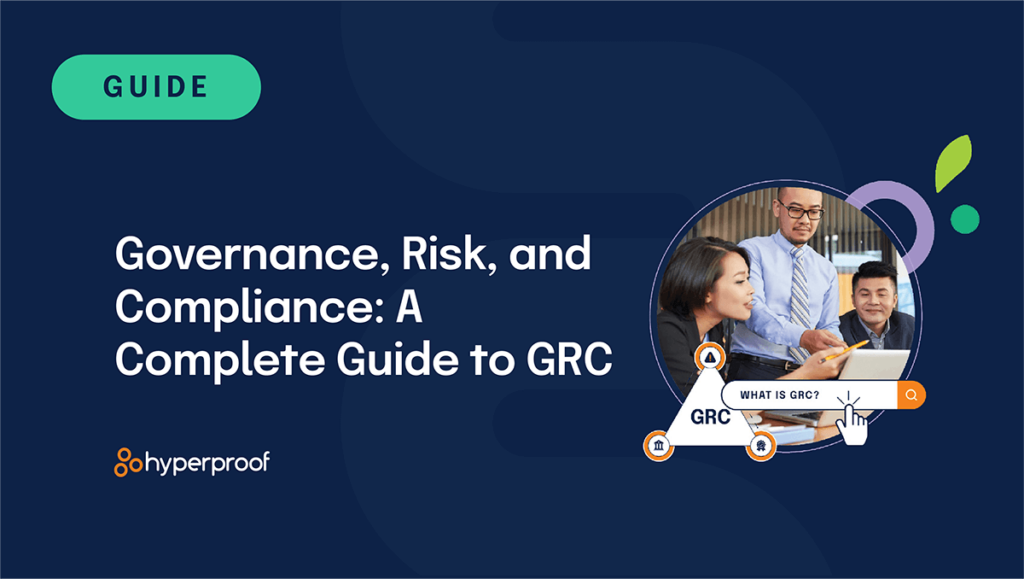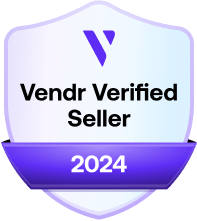Guide
What “Operationalizing Compliance” Really Means and How to Do It
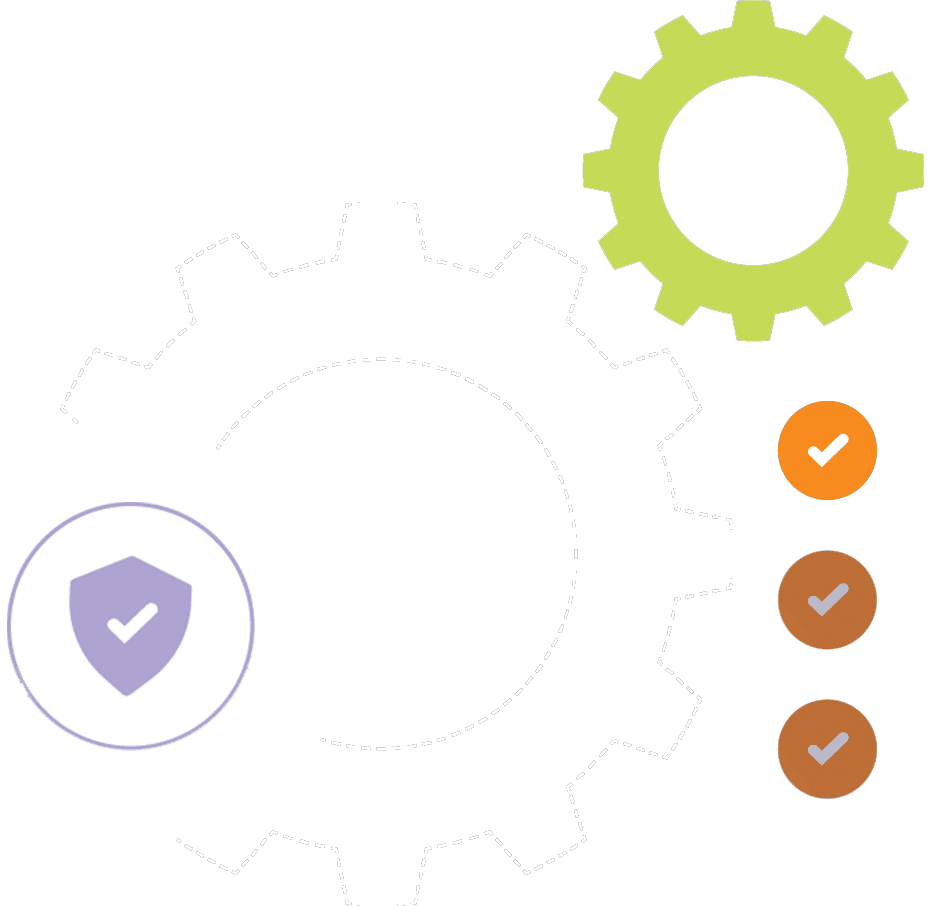
Introduction
When compliance and security professionals first encounter Hyperproof, they often come from fast-growing companies where compliance inefficiencies and errors have become critical pain points.
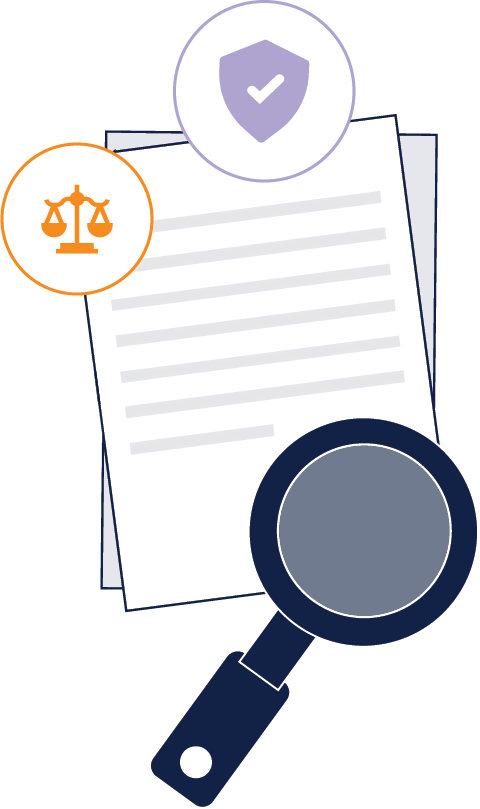
These teams struggle to keep up with their legal obligations, particularly around data protection and cybersecurity, as their company’s data volume grows and managing it — ensuring encryption, tracking storage locations, and restricting access — becomes increasingly complex.
Adding to the challenge, various business teams frequently procure new software, which expands the organization’s attack surface and increases the risk of third-party breaches. Frequent audits, often poorly timed with other business activities, only add to their frustration as they try to align security and compliance with broader business objectives while maintaining operational efficiency.
These overburdened professionals need more sustainable ways to meet their growing compliance obligations, and many realize that even hiring additional staff will only partially address the challenges. They aren’t just looking for better tools and short-term efficiency gains; they also need greater operational prowess to manage their compliance programs sustainably.
Hyperproof has helped hundreds of organizations create better processes and operational frameworks alongside our trust management software, allowing compliance teams to increase productivity without adding headcount. Beyond operational efficiencies, we’ve also helped our customers foster better collaboration between compliance teams and other key roles, such as product managers, engineers, and IT system admins, creating systems that benefit everyone.
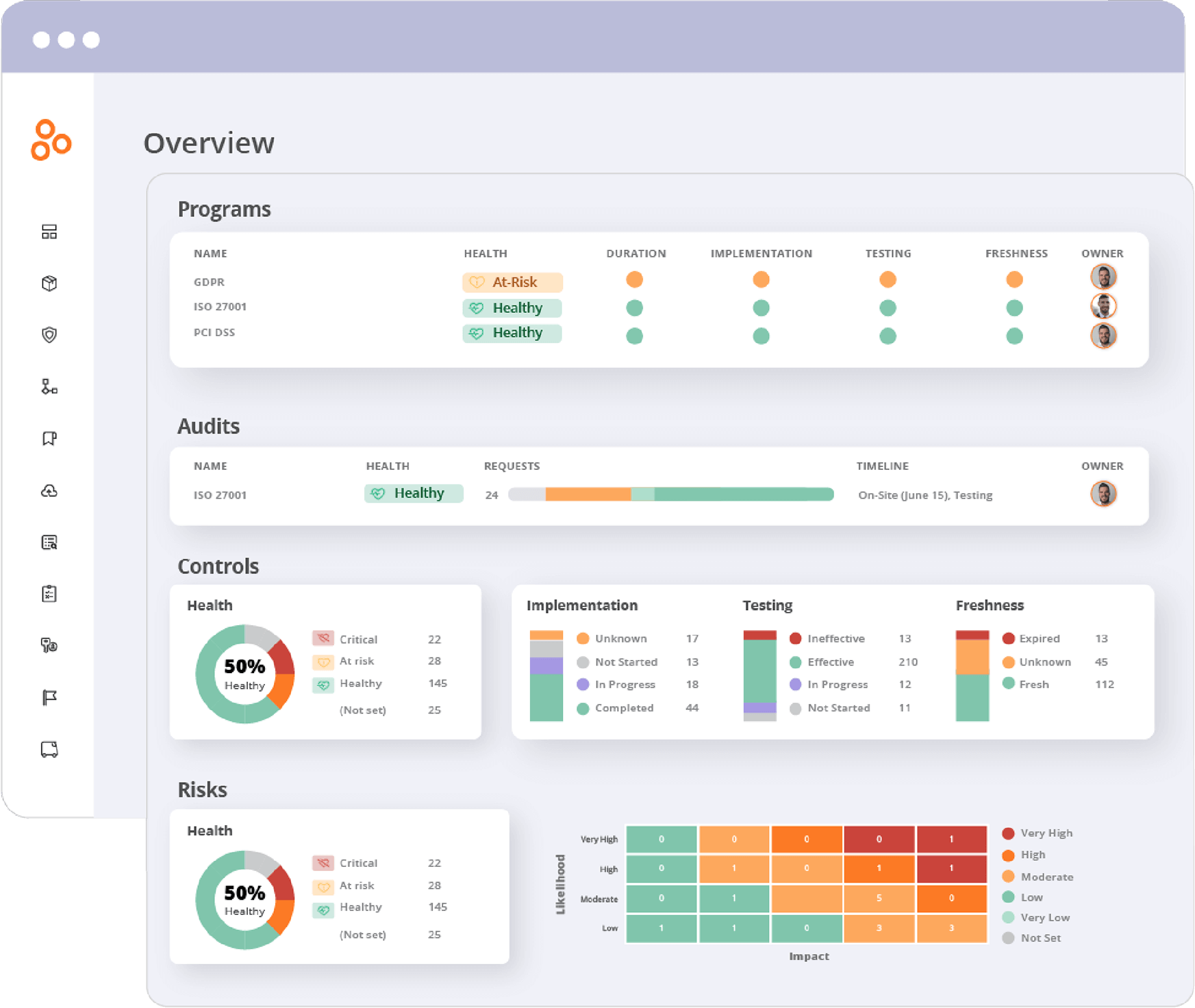
In this guide, we’ll offer practical tips to help you build a highly effective and efficient compliance system using sound processes, tools, and tactics. We aim to give you the tools to transform your compliance program from a costly burden into a strategic asset for your organization.
Compliance operations: A new approach and discipline
As organizational functions become more complex and impact business outcomes, specialized operations disciplines are created to improve productivity and efficiency.
For example, Sales Operations (SalesOps) emerged in the 1970s and 1980s, largely due to the increasing complexity of sales organizations and processes. Initially, SalesOps focused on administrative tasks such as territory management, quota setting, and sales reporting. Over time, the role evolved to include strategic functions like data analytics, CRM management, sales forecasting, and optimizing the overall sales process.
Similarly, DevOps integrated development and IT operations to enhance collaboration and automate software delivery, speeding up deployment cycles. Product Operations (ProductOps) was introduced to support product managers by aligning cross-functional teams and reducing friction in product development.
In the same way, compliance teams now need a Compliance Ops (ComOps) function to optimize productivity and reduce inefficiencies through process improvements, technology, and measurement. ComOps helps compliance teams work more effectively with security, IT, and other departments while addressing friction in the compliance lifecycle.
According to Hyperproof’s GRC Maturity Model, organizations can measure the success of implementing improvements to compliance operations through several metrics and approaches that vary by maturity level:
Level 1: Initial
At the Initial maturity level, organizations begin by implementing:
Level 2: Advanced
As they progress to Advanced maturity, measurement becomes more sophisticated:
Level 3: Optimal
At the Optimal maturity level, measurement includes:
The model emphasizes that as organizations mature, they should move from basic, retrospective metrics toward predictive, real-time monitoring systems that align with business goals and provide actionable insights for continuous improvement.
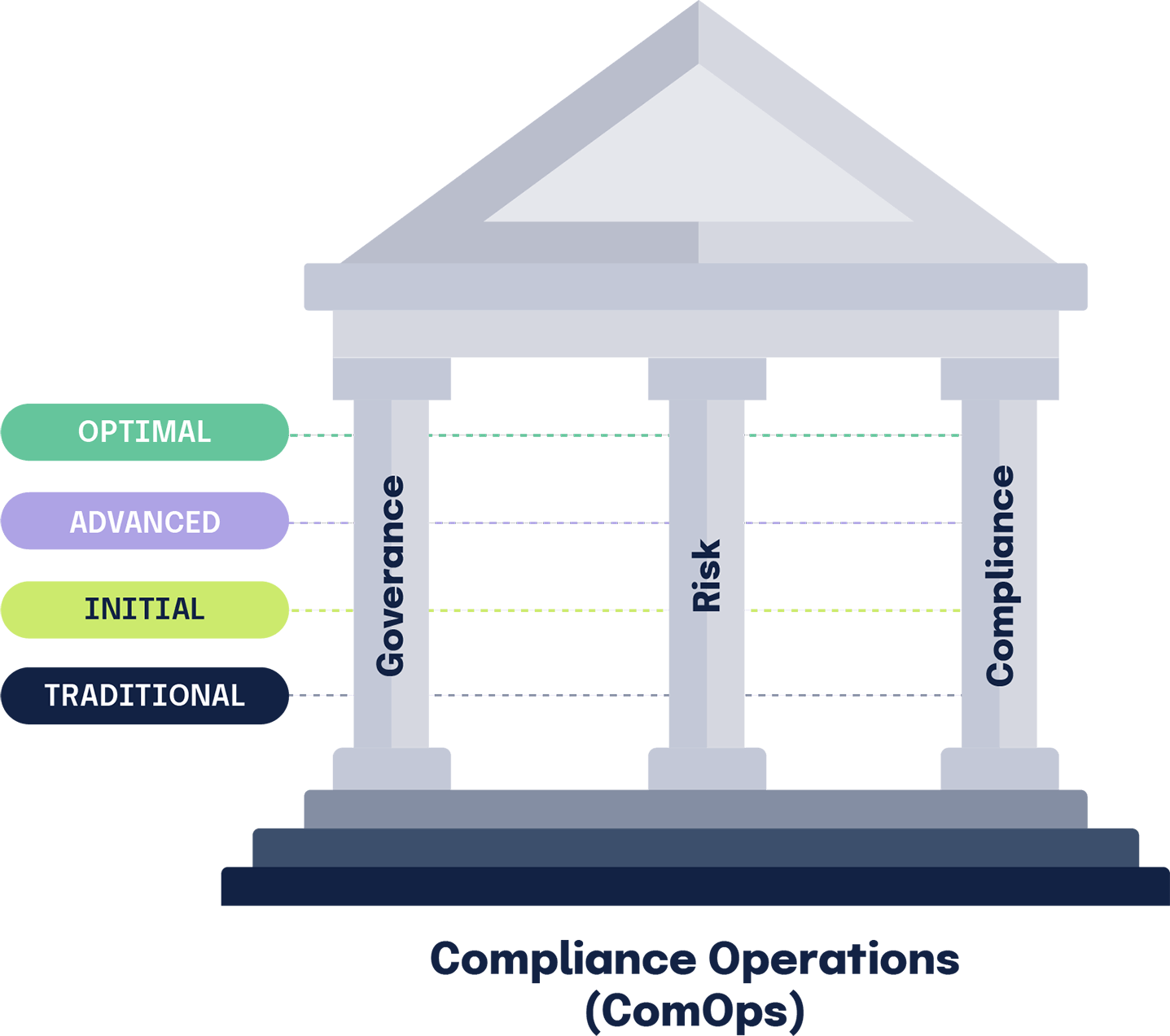
Now that we’ve discussed the need for ComOps, let’s explore the key tactics that will help you achieve the operational efficiencies and transformation you desire.
Operationalizing compliance: Short-term and long-term tactics

To operationalize compliance, it’s helpful to structure your plan into three parts: short-term actions, medium-term actions, and long-term actions. Consider this your “crawl, walk, run” approach.
Short-term actions and considerations
(within the next three months)
Replace spreadsheets and manual processes with compliance operations software
Suppose you feel like you’re crawling because your processes are too manual and tedious. In that case, the number one productivity booster you can adopt is to implement an agile, flexible compliance operations software.
According to the GRC maturity model, organizations at the Traditional level rely on “manual processes with some digital tools for compliance tasks” with “decentralized evidence management” and “limited integration of compliance systems.” Understanding your starting point helps create a realistic transition plan.
The 2025 IT Risk and Compliance Benchmark Report shows that compliance, security, and risk leaders are the primary champions (48% as champions, 37% as influencers) when purchasing compliance or risk technology. Gaining their support is essential for the successful implementation of compliance operations software.
The Benchmark Report also found that 52% of respondents spend 30-50% of their time on administrative tasks like manual data entry. Successful implementation requires preparing staff for new processes and reduced manual work.
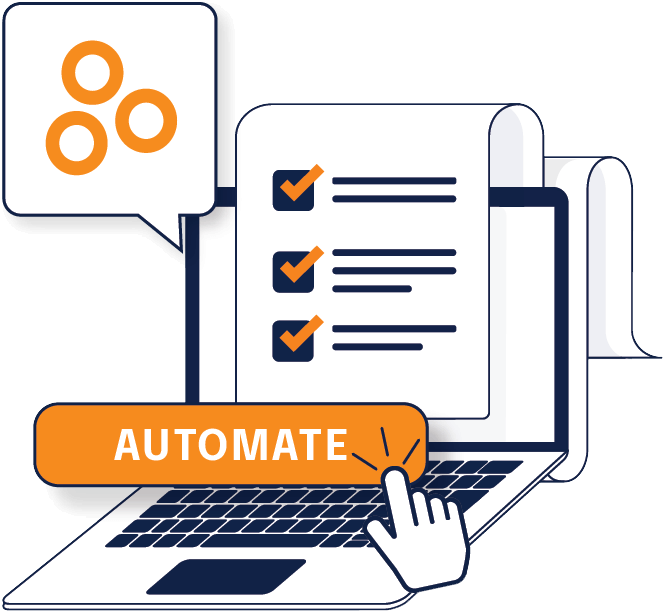
A solid compliance operations software platform helps an organization centrally manage work, provides all stakeholders with visibility into all workstreams, and automates processes around audit preparation, conducting assessments, and controls testing and remediation.
Let’s examine how compliance operations software can quickly help you eliminate tedious, manual work while reducing the risks of non-compliance and security.
1. Streamline audit preparation
Preparing for audits can be incredibly cumbersome. A compliance operations software such as Hyperproof can help you cut your audit prep process by half through several mechanisms:
When you use a software platform to organize all of your compliance artifacts and collaborate with internal team members and your auditors, what used to take days will take only a few hours.
2. Improve collaboration with control owners
Compliance operations software will save you time whenever you need to make requests to control owners and they need to submit information back to you or provide evidence of task completion. For example, Hyperproof has bi-directional task integrations with popular project management systems, including Jira, ServiceNow, and Asana, that help GRC professionals create tasks and assign them in Hyperproof. Task assignees receive notifications in their current project management system, complete their tasks in their tool of choice, and updates are synced automatically to Hyperproof.
3. Start your automation journey by automating evidence collection and control testing
If your organization relies on third-party software and cloud infrastructure providers to run its business, you know how much work is required to avoid missteps in configurations and user access management. Auditing and monitoring are critical aspects of any mature security program. Yet, continuous monitoring and frequent audits can be a tall order for resource-constrained security/compliance teams.
Modern compliance operations software plays a watchdog role, alerting your security team of flaws in your system configurations and user management controls so they can fix them before threat actors can exploit them. For instance, Hyperproof comes with native integrations called Hypersyncs, with 70+ enterprise apps and cloud services containing valuable risk detection information.
Suppose you use AWS services (e.g., EC2, IAM, S3, and VPC). You can set up a Hypersync to any of your AWS services just by entering your credentials. Hyperproof automatically pulls information from those services, revealing how your product teams handle information system security, identity, authentication, configuration, and change management. Once these Hypersyncs are set up, a security or compliance professional can also write automated tests on the evidence brought in from AWS. This step helps them identify failing or unhealthy controls sooner than otherwise and take a more proactive approach to trust management.
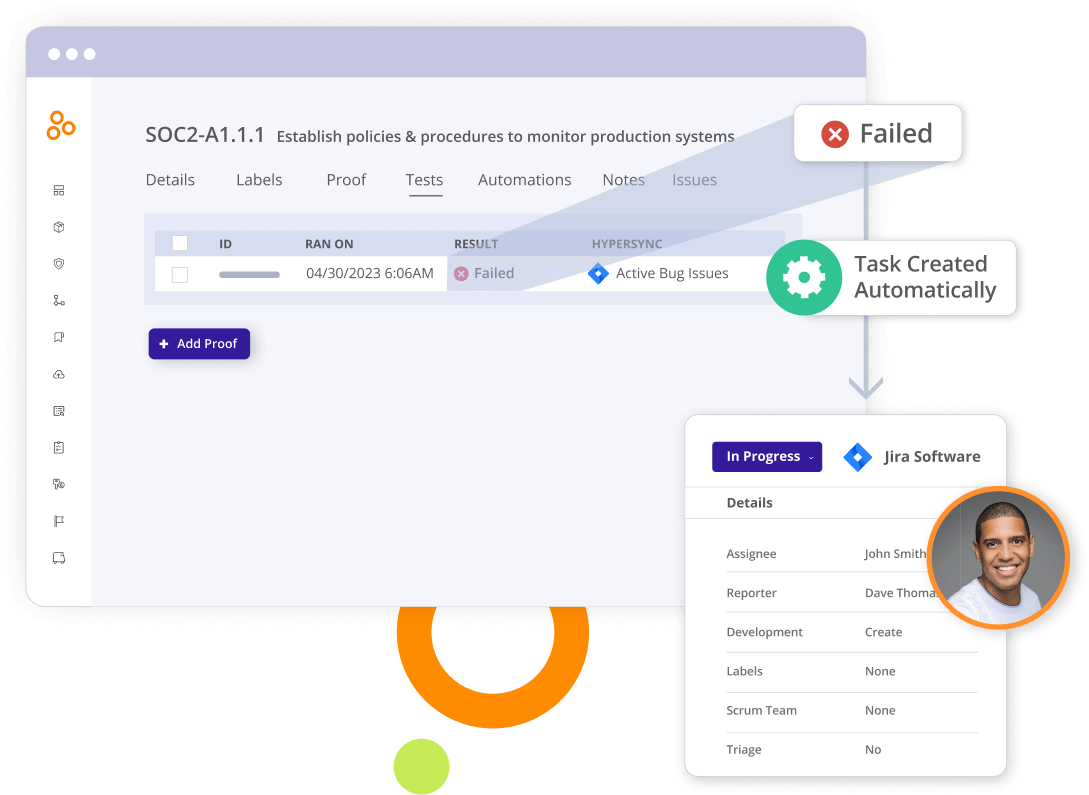
Automated controls testing and monitoring are especially helpful for small and lean teams, where the same team has to manage multiple work streams across the compliance and security functions. We recommend starting your automation journey by automating control processes on frequently accessed systems that don’t host mission-critical or highly sensitive data.

By setting up automated control tests in Hyperproof, I can worry less about those controls and focus my time on managing the critical controls.
Tony Dee’Ario
Senior Compliance Manager // Highspot
4. Set up a scalable structure for control management
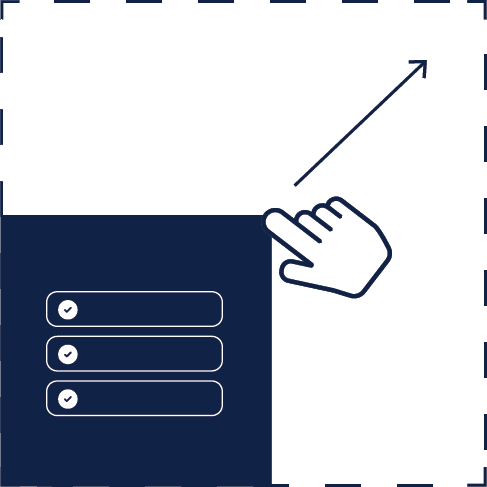
Suppose your organization operates in multiple markets or offers several product lines. In that case, you may face this challenge around controls management: A supervisory team must communicate requirements to control operators within the individual entities (e.g., product org, site, etc.) and ensure that the entities have implemented adequate controls that address the requirements. Operators within the individual entities must self-manage controls and provide evidence of their management to the supervisory team.
Hyperproof has a unique feature called Scopes that helps an organization set up a scalable structure for managing controls. With Scopes, each organization can define entities to reflect their preferred organizational structure. For instance, entities can represent systems that process sensitive data, facilities, products, business units, or subsidiaries within a parent company.
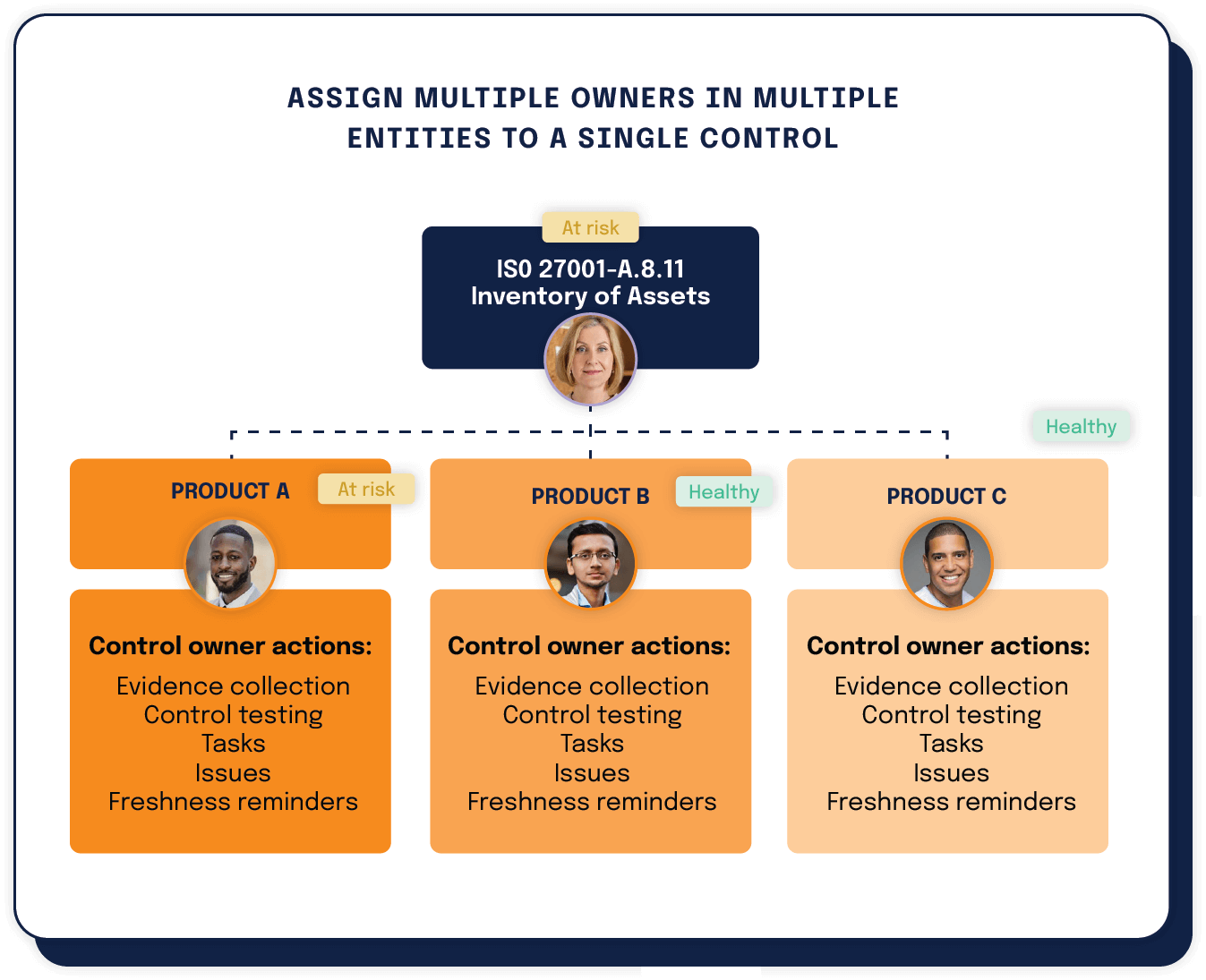
Once entities have been created, the supervisory team can assign a single control to multiple “owners” across entities. Entity-level control “owners” can conduct all control management activities in Hyperproof.
By using this scope structure, your compliance team can accomplish four goals at once:
Control: The supervisory team can define baseline control requirements and communicate these requirements once to all operators within multiple entities, such as product teams, facilities, and business units.
Autonomy: Operators within each entity can handle control implementation details, manage controls, collect evidence of controls, and track issues and tasks when controls require remediation.
Visibility: The supervisory team can easily see the status of all controls, identify which ones are unhealthy, and determine which entity the issue(s) comes from.
Accountability: The supervisory team can easily see and review evidence of control operation provided by the entity-level operators.
5. Create a single repository for vendor contracts and vendor risk assessments
If you are trying to stay on top of vendor risks and have many software and service provider vendors to manage, you already know that spreadsheets and ad-hoc tools do not scale. These homegrown solutions also hinder your ability to prioritize remediation efforts and fail to meet the expectations of risk-conscious auditors and customers.


A compliance operations software like Hyperproof can help you efficiently conduct vendor due diligence and risk assessments and track risk remediation activities in a single application.
Rather than tracking vendors in a spreadsheet, you can track all of them in Hyperproof and assign a primary point of contact or owner for each vendor. All vendor risk-related documents and information, such as each vendor’s risk rating and most recent responses to your security questionnaire, can be linked together and organized, along with pending tasks.
A note on timing and order of operations
Depending on how many people are involved in decision-making within your organization and all else you have going on, doing all of this might take a few weeks or a few months. Based on Hyperproof’s experience, we’ve found that most of our clients can accomplish these actions within three months once they’ve purchased Hyperproof.
Medium-term actions and considerations
(3 to 12 months)
Once you’ve improved your key processes and workflows by moving them into a compliance operations platform, you can take actions that will help you reduce and better manage the growing complexity. These sustainable practices will set you up for the next growth phase.
1. Link controls and risks together to unify compliance and risk management
If your risk register is maintained in one location and all of your control information in another, you’ll likely duplicate work and need help seeing which risks truly need your attention. Once controls are linked to risks, you can understand how controls are used to mitigate risks, view residual risks, and monitor risks based on the health and effectiveness of linked controls. You can also specify how a control would reduce the risk regarding likelihood or impact. The actual risk of any risk item will automatically update based on any health changes to linked controls. This step helps your team understand which risks require further mitigation and which are well covered.
To solve this problem, you can migrate your risk register and all controls into a single compliance operations platform like Hyperproof. Once both risks and controls are in Hyperproof, link them together.
Hyperproof’s data structure and user interface make this task easy. You can go into a control in Hyperproof and link it to related risks, or you can go into a single risk item in your risk register and link the related controls.
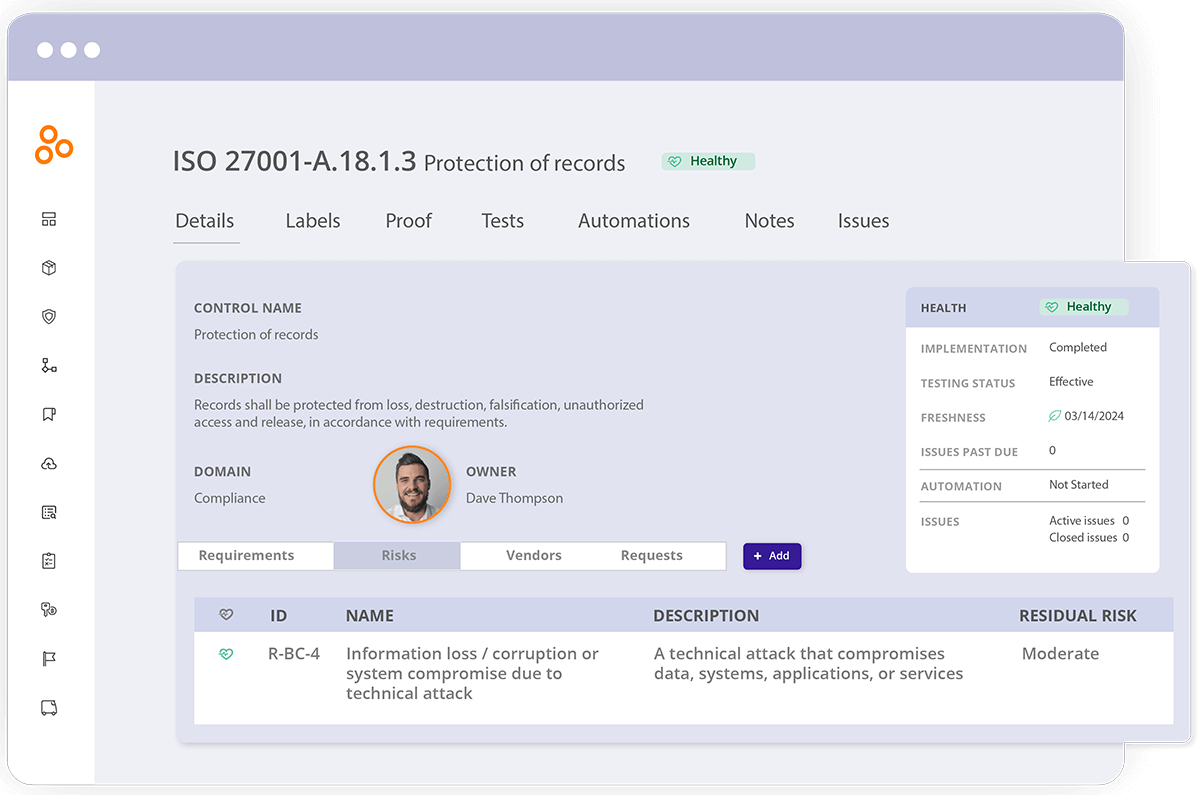
2. Start planning for the next compliance framework
It generally takes an organization some time (several months, a year, or longer) to become compliant with a new compliance framework. Therefore, if your organization is growing and your soon-to-be customers or regulators in your space will ask you to meet new requirements, it’s better to start preparations early so your compliance checklist is ticked off when you’re ready to sign new contracts.
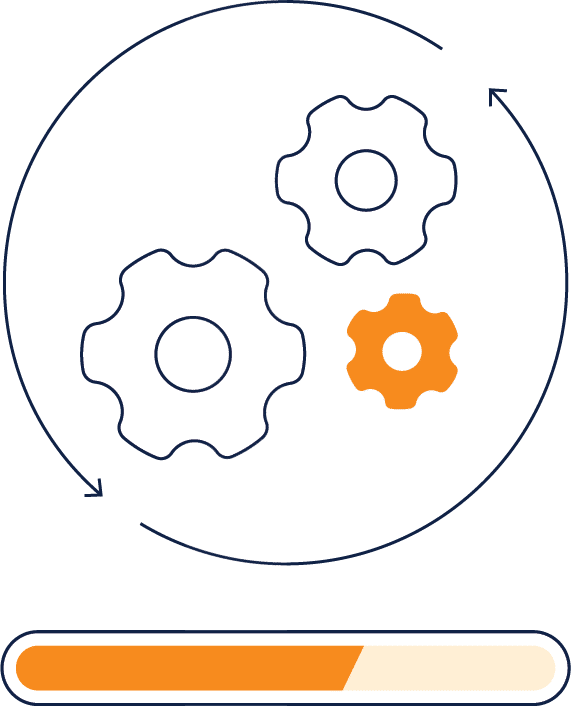
To prepare, you may want to work with a knowledgeable party (internal or external) to conduct an assessment or undergo an evaluation process to understand your current state and the gaps you have to fill to comply with this new framework’s requirements.
Compliance operations platforms like Hyperproof provide an intuitive, easy-to-use Assessment module for assessors, compliance advisory firms, and internal audit/compliance teams.
3. Automate more workflows
Now that you’ve set up a few automations, you can find a few more processes to automate. For instance, if you’re using Hyperproof, you may automate the scheduling of recurring tasks, automate more control tests on a few more systems/services, or set up a streamlined user access review campaign.
Medium- to long-term
(12 to 24 months)
1. Identify similar controls and consolidate them into a common control framework
As your organization matures and additional controls are implemented, you’ll eventually reach a point where you have many similar controls, each created in response to a specific regulation. It would be unsustainable to continue with this approach.
At Hyperproof, we’ve worked with organizations that have over one thousand controls related to IT, information security, and privacy. These organizations know they need more scalable approaches to managing their controls and have looked within and outside (at the established frameworks such as NIST 800-53, SOC 2®, ISO 27001, and many others).
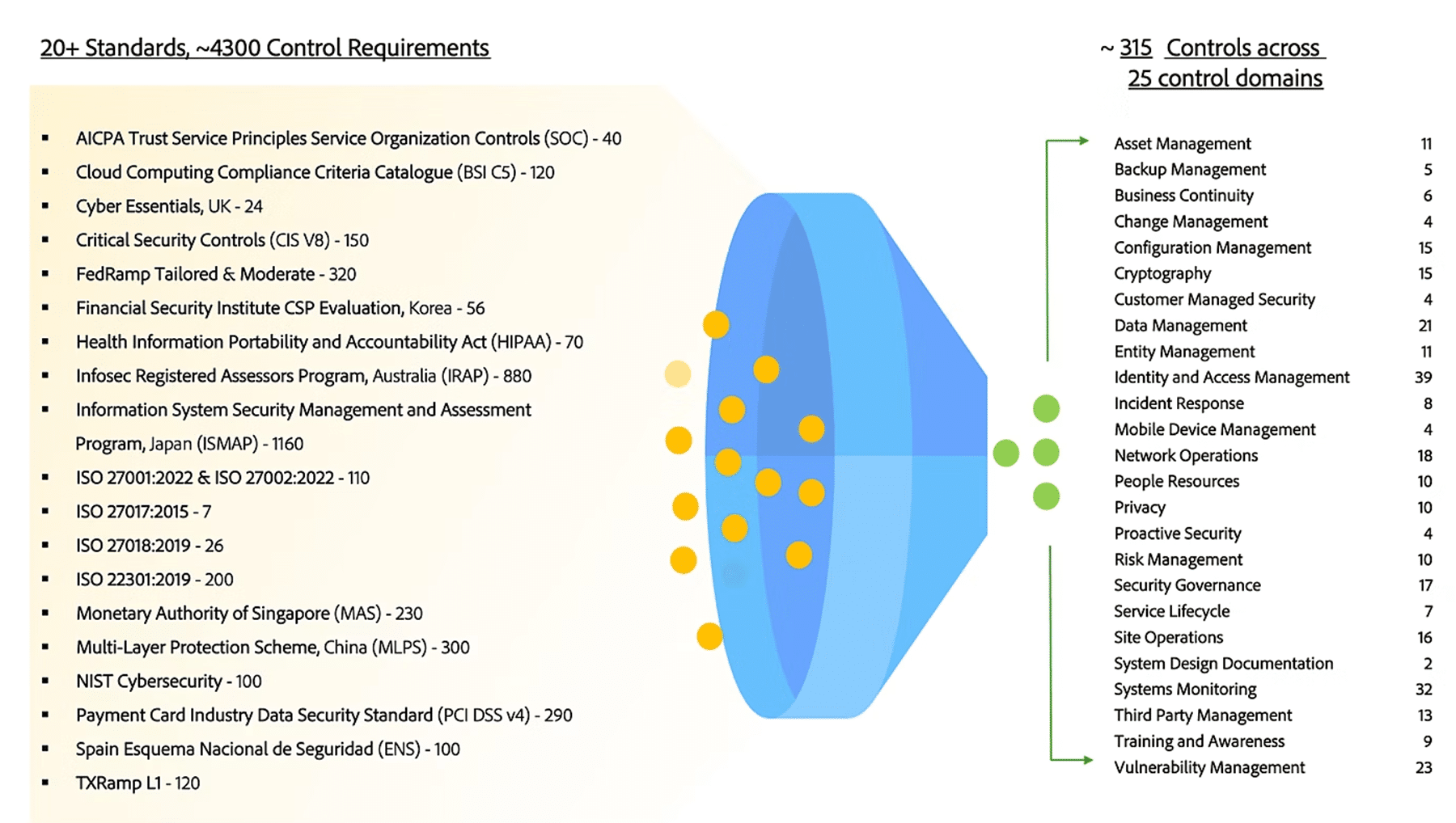
Source: Adobe Common Controls Framework
They’ve chosen to consolidate their controls based on their unique needs and requirements and the recommendations of established frameworks. Although time-consuming, this exercise has helped organizations streamline their control management while maintaining standardized and effective practices to address cybersecurity, privacy, and information system risks across all operational domains.
According to The 2025 IT Risk and Compliance Benchmark Report, 55% of respondents reported using a common controls framework (CCF) to streamline their GRC processes. This represents a 10% increase year-over-year, indicating this is not a short-term trend but a growing practice among organizations.
The report indicates that companies adopting a CCF do so to aggregate and rationalize regulations, making it more efficient to address rules and requirements across different frameworks. This approach contrasts with other methods where 25% of organizations choose to align to the most regional laws while 6% maintain a reactive approach of responding to individual regulatory changes as they happen.
2. Redesign job roles and responsibilities

Once compliance operations software has taken root and automated a significant portion of your existing work, your team members will have free time to do the strategic things they haven’t had time to focus on. As a leader, you may need to re-conceptualize team members’ roles and job responsibilities.
As compliance teams can rely more on real-time compliance reports and evidence gathering becomes continuous, they won’t need to stress over audits and work under deadlines defined by audit cycles. As software handles much of the scheduling, monitoring, and response of tasks, the manual work for security and compliance teams will significantly decrease. Their focus will shift to overseeing complex incidents that require human intervention.
Compliance professionals can shift from rules enforcer, meeting organizer, and project manager roles to evaluating emerging risks that automated systems haven’t addressed. Such work includes focusing on industry-specific regulatory changes, new legal frameworks (e.g., around AI), and proactive assessment of new compliance risks. They’ll also serve as advisors to the business, helping shape products, processes, and corporate decision-making with a forward-looking view on governance and regulatory impact.
Conclusion
Compliance and security professionals face increasing complexity and demand in today’s fast-paced, data-driven business environment. As companies grow, so do the challenges of managing legal obligations, data protection, and security.
Hyperproof offers a practical solution by providing compliance operations software that automates manual processes, improves collaboration, and enables operational efficiencies. By adopting Hyperproof, teams can shift from managing tedious compliance tasks to focusing on strategic initiatives, enhancing productivity without increasing headcount. With the right tools, processes, and structure in place, compliance becomes a scalable asset that strengthens the organization and sets the organization up for future success.
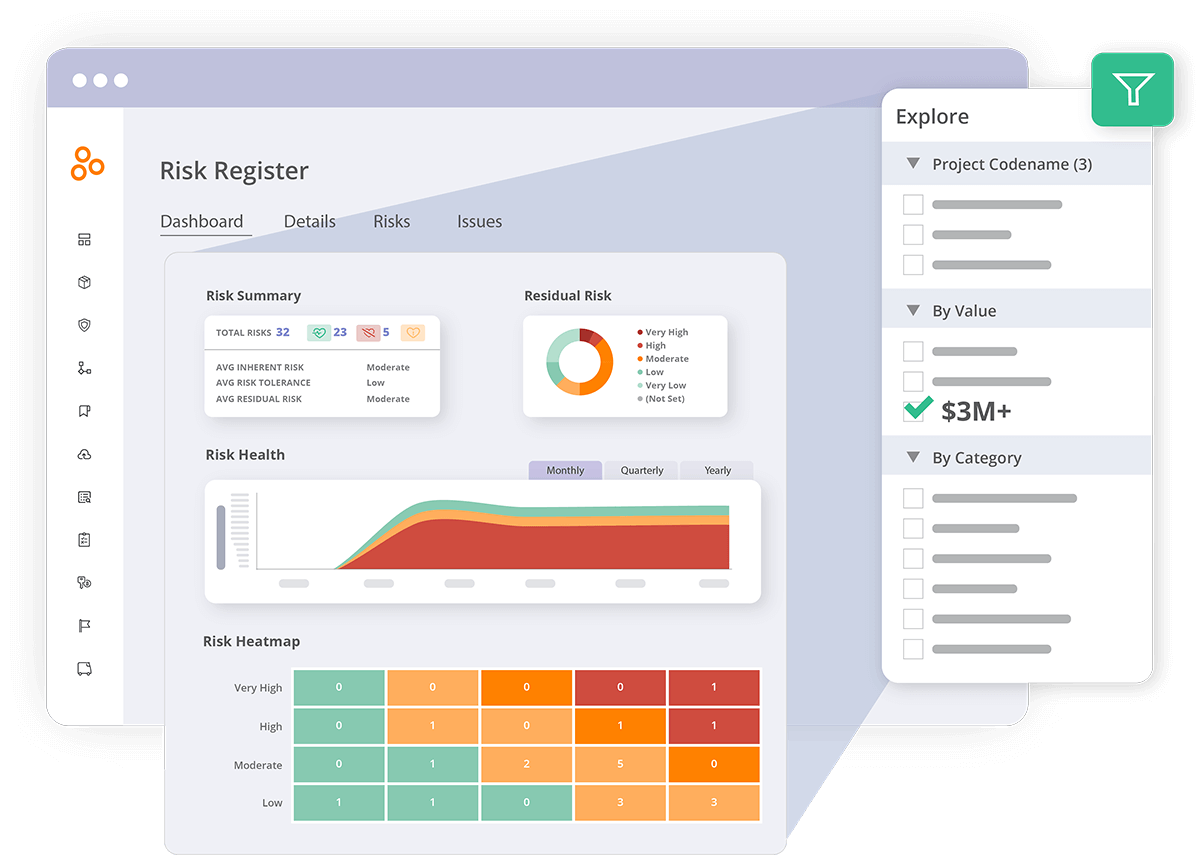
Download the PDF

